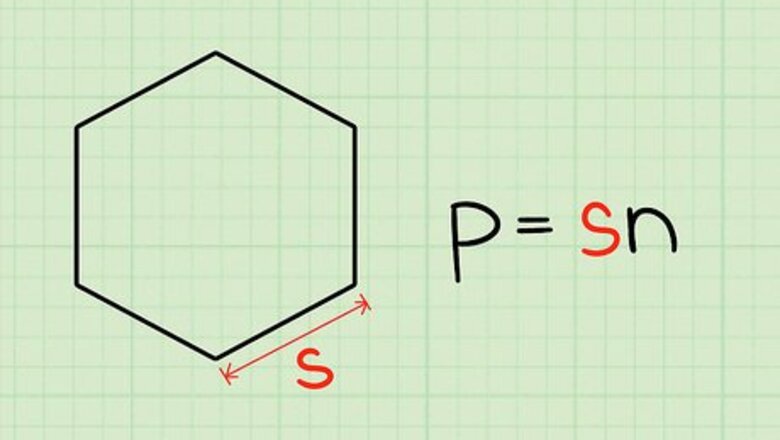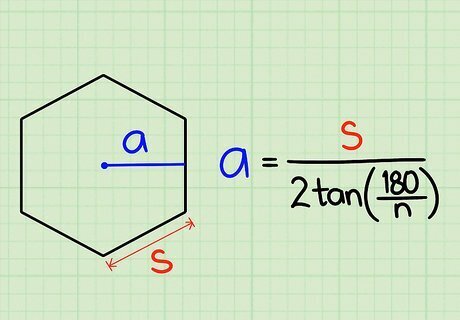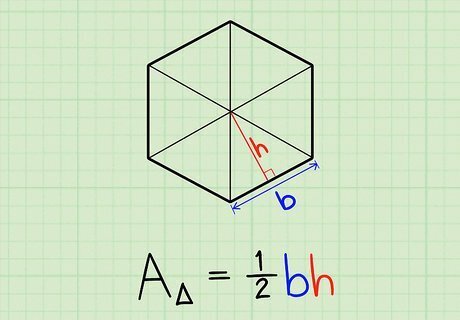
views
X
Research source
Many polygons, such as quadrilaterals or triangles have simple formulas for finding their areas, but if you're working with a polygon that has more than four sides, then your best bet may be to use a formula that uses the shape's apothem[2]
X
Research source
and perimeter. With a little bit of effort, you can find the area of regular polygons in just a few minutes.
Calculating the Area

Calculate the perimeter. The perimeter is the combined length of the outline of any two-dimensional figure. For a regular polygon, it can be calculated by multiplying the length of one side by the number of sides (n).

Determine the apothem. The apothem of a regular polygon is the shortest distance from the center point to one of the sides, creating a right angle. This is a little trickier to calculate than the perimeter. The formula for calculating the length of the apothem is this: the length of the side (s) divided by 2 times the tangent (tan) of 180 degrees divided by the number of sides (n).

Know the correct formula. The area of any regular polygon is given by the formula: Area = (a x p)/2, where a is the length of the apothem and p is the perimeter of the polygon.

Plug the values of a and p in the formula and get the area. As an example, let's use a hexagon (6 sides) with a side (s) length of 10. The perimeter is 6 x 10 (n x s), equal to 60 (so p = 60). The apothem is calculated by its own formula, by plugging in 6 and 10 for n and s. The result of 2tan(180/6) is 1.1547, and then 10 divided by 1.1547 is equal to 8.66. The area of the polygon is Area = a x p / 2, or 8.66 multiplied by 60 divided by 2. The solution is an area of 259.8 units. Note as well, there are no parenthesis in the "Area" equation, so 8.66 divided by 2 multiplied by 60, will give you the same result, just as 60 divided by 2 multiplied by 8.66 will give you the same result.
Understanding the Concepts in a Different Way

Understand that a regular polygon can be thought of as a collection of triangles. Each side represents the base of a triangle, and there are as many triangles in the polygon as there are sides. Each of the triangles are equal in base length, height, and area.

Remember the formula for the area of a triangle. The area of any triangle is 1/2 times the length of the base (which, in the polygon, is the length of a side) multiplied by the height (which is the same as the apothem in regular polygon).

See the similarities. Again, the formula for a regular polygon is 1/2 times the apothem multiplied by the perimeter. The perimeter is just the length of one side multiplied the by the number of sides (n); for a regular polygon, n also represents the number of triangles that make up the figure. The formula, then, is nothing more than the area of a triangle multiplied by the number of triangles in the polygon.














Comments
0 comment